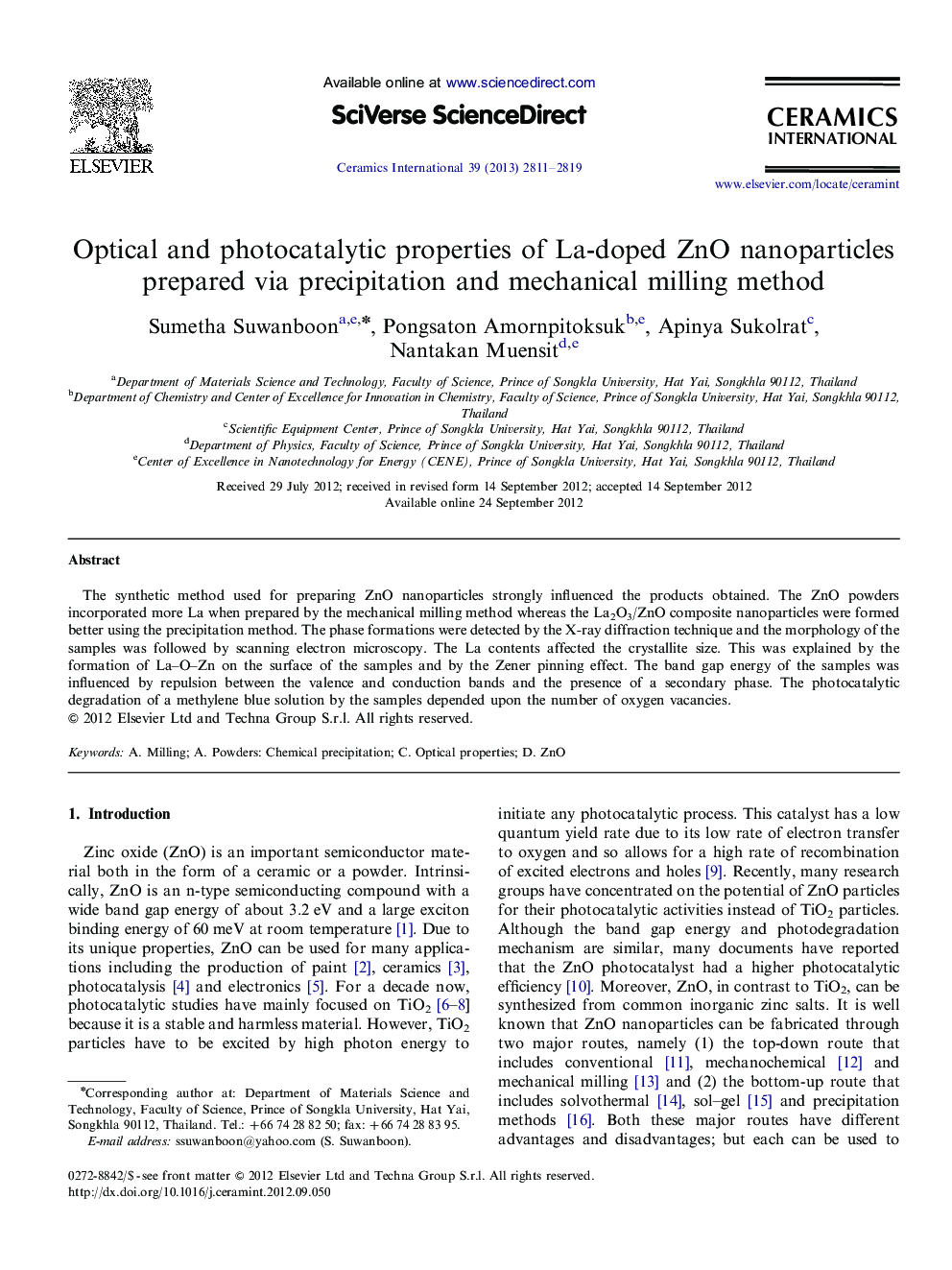| Article ID | Journal | Published Year | Pages | File Type |
|---|---|---|---|---|
| 10626173 | Ceramics International | 2013 | 9 Pages |
Abstract
The synthetic method used for preparing ZnO nanoparticles strongly influenced the products obtained. The ZnO powders incorporated more La when prepared by the mechanical milling method whereas the La2O3/ZnO composite nanoparticles were formed better using the precipitation method. The phase formations were detected by the X-ray diffraction technique and the morphology of the samples was followed by scanning electron microscopy. The La contents affected the crystallite size. This was explained by the formation of Laî¸Oî¸Zn on the surface of the samples and by the Zener pinning effect. The band gap energy of the samples was influenced by repulsion between the valence and conduction bands and the presence of a secondary phase. The photocatalytic degradation of a methylene blue solution by the samples depended upon the number of oxygen vacancies.
Related Topics
Physical Sciences and Engineering
Materials Science
Ceramics and Composites
Authors
Sumetha Suwanboon, Pongsaton Amornpitoksuk, Apinya Sukolrat, Nantakan Muensit,
